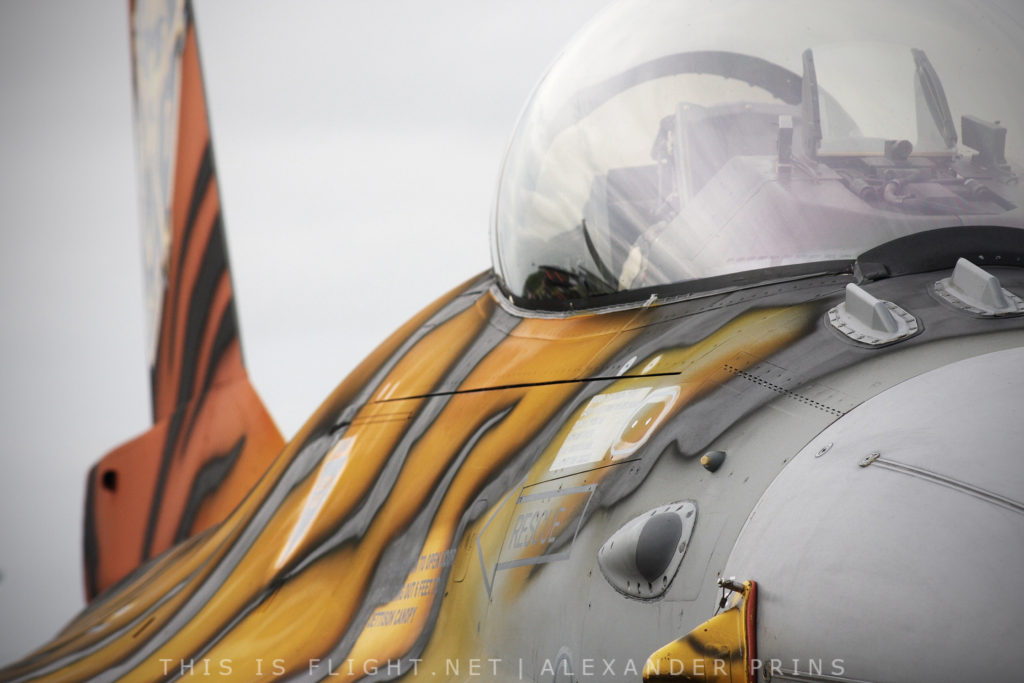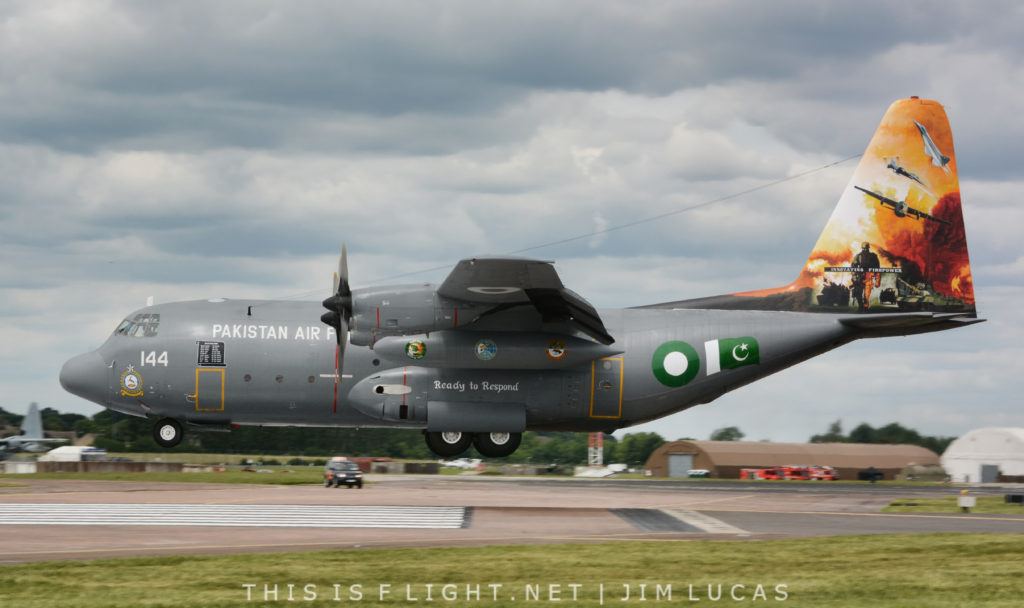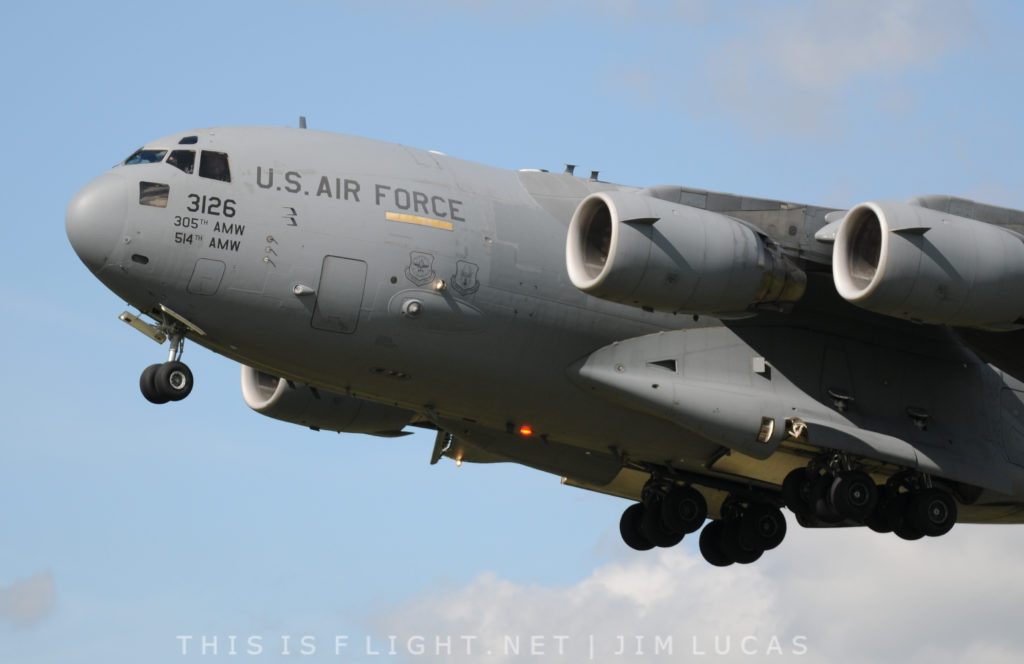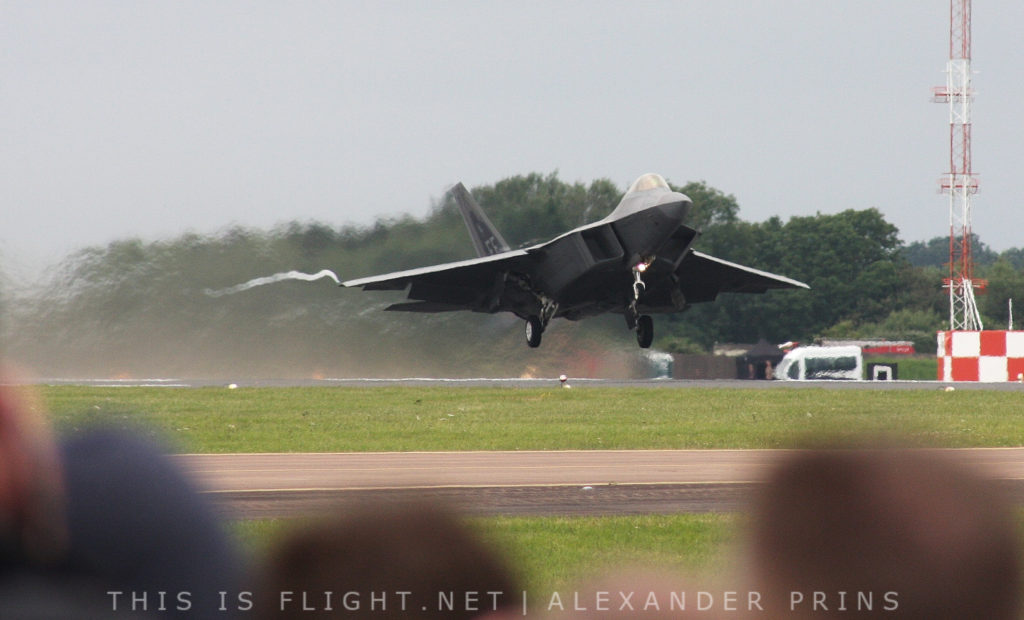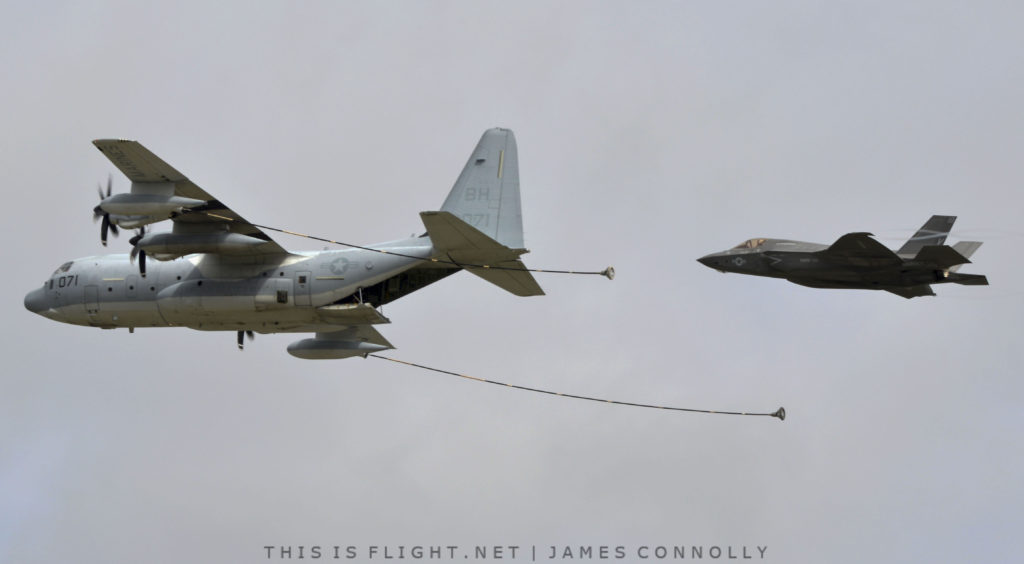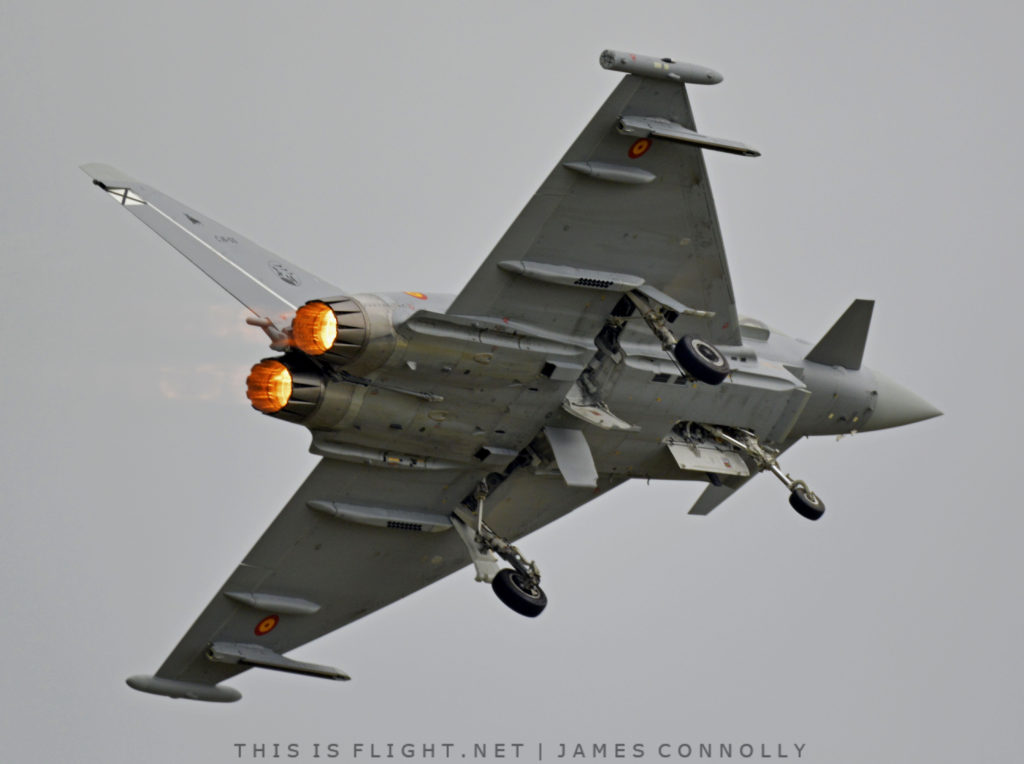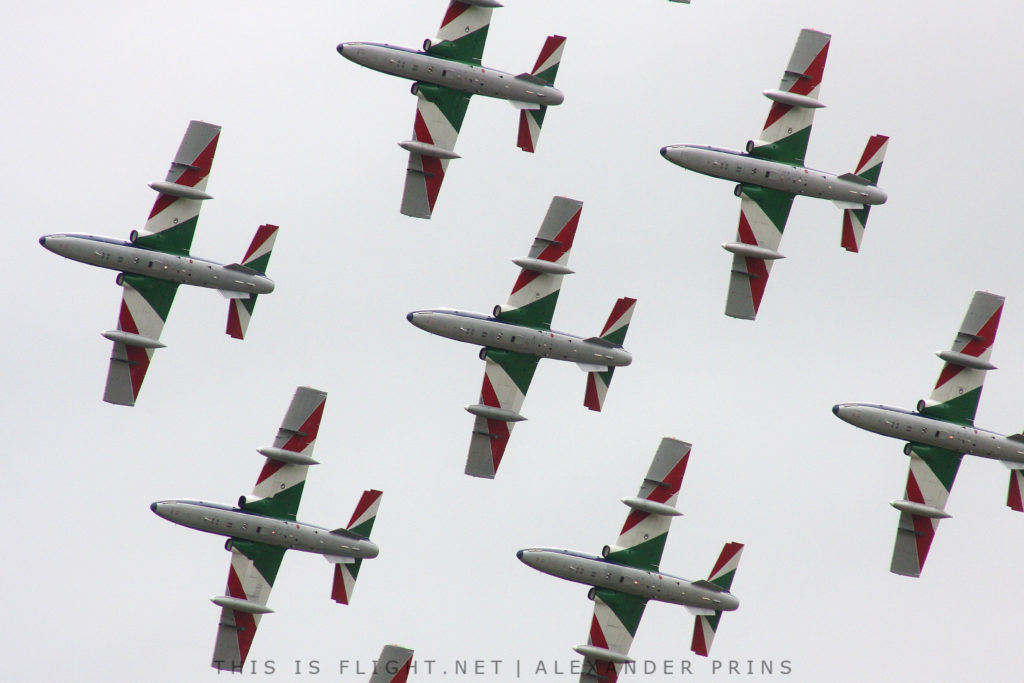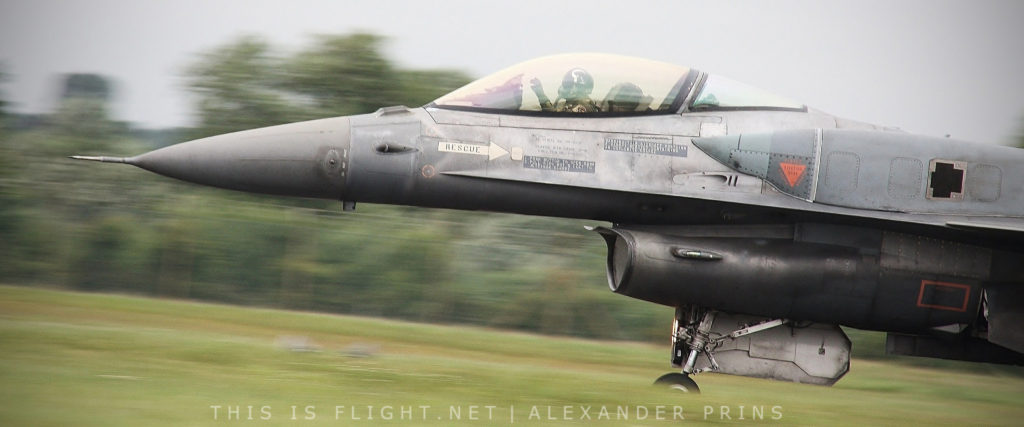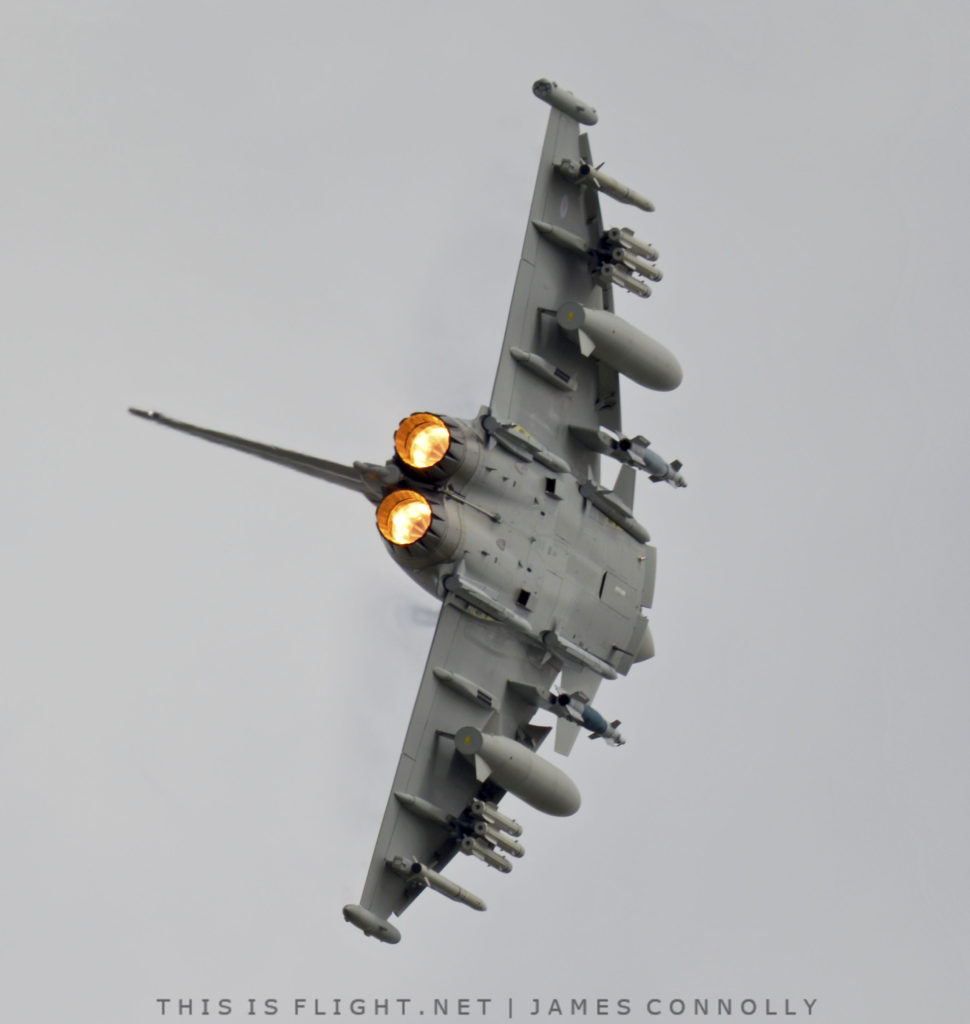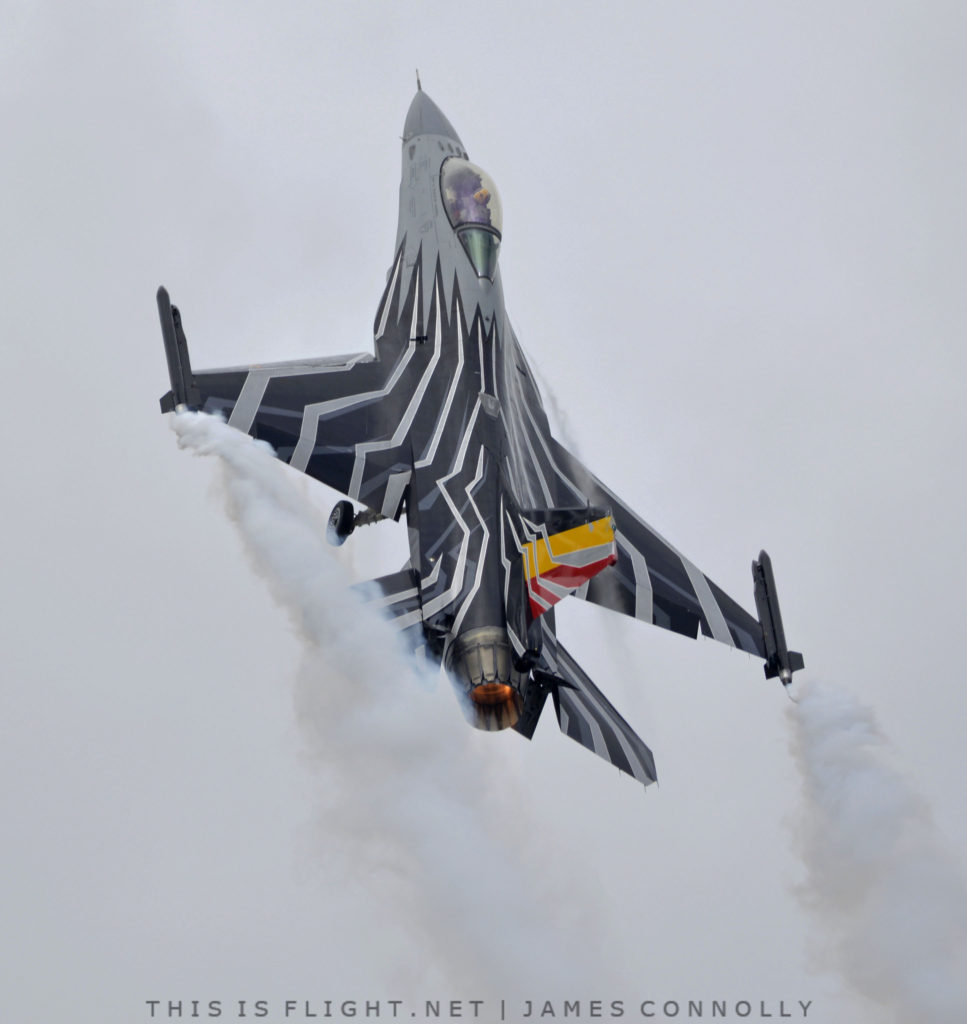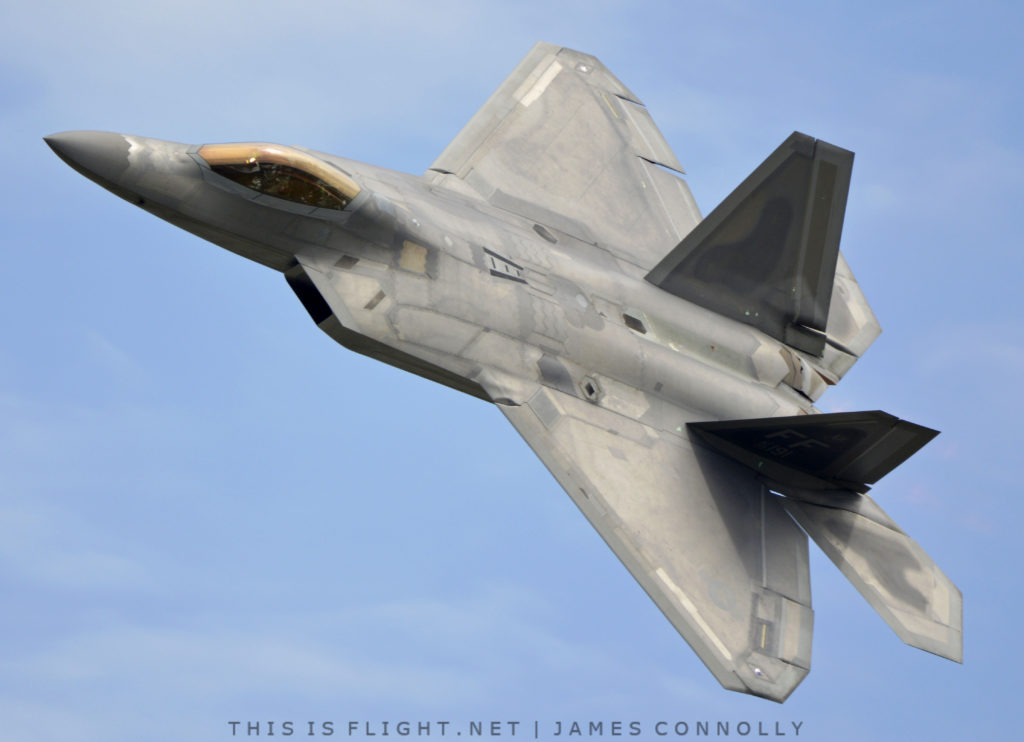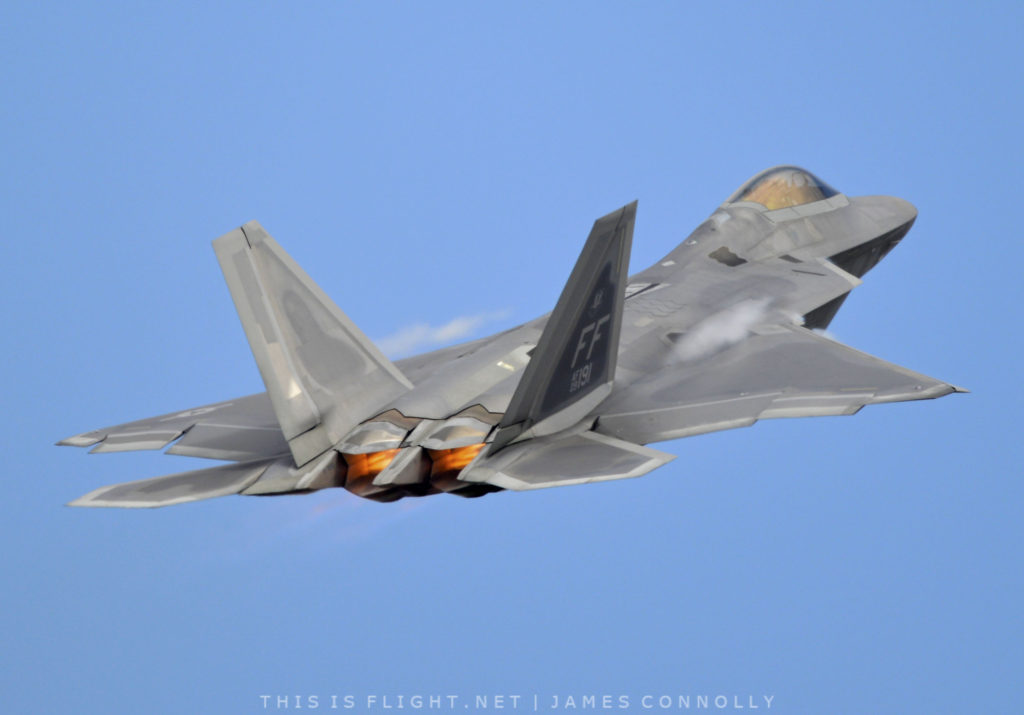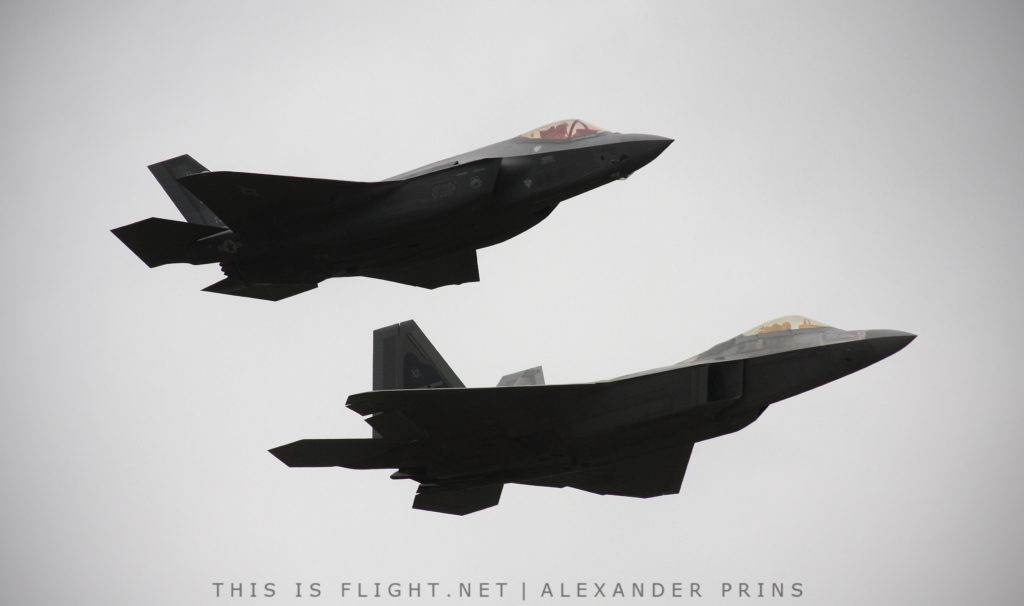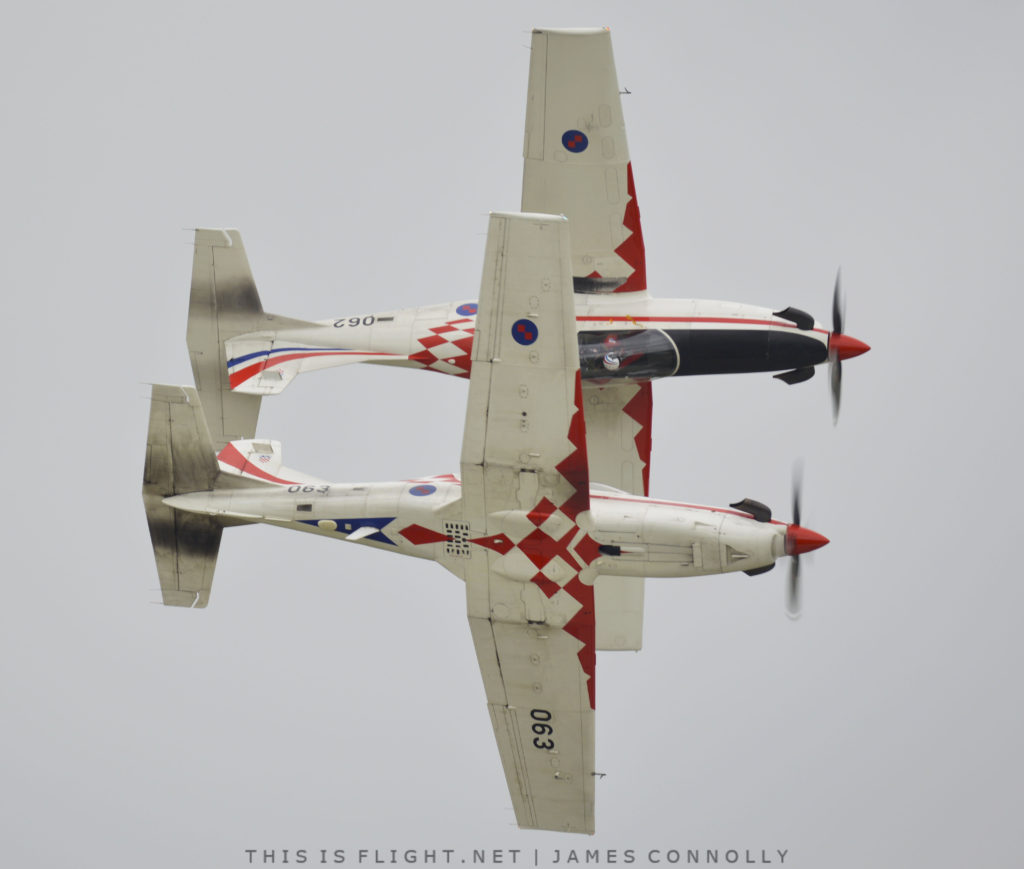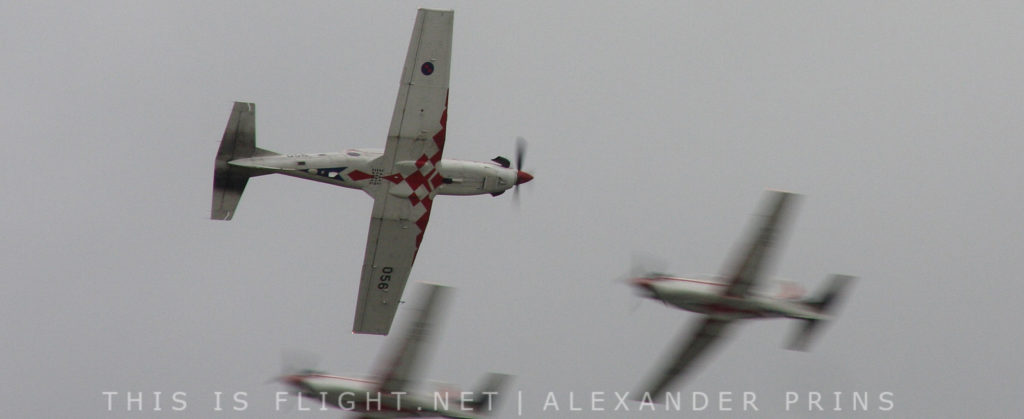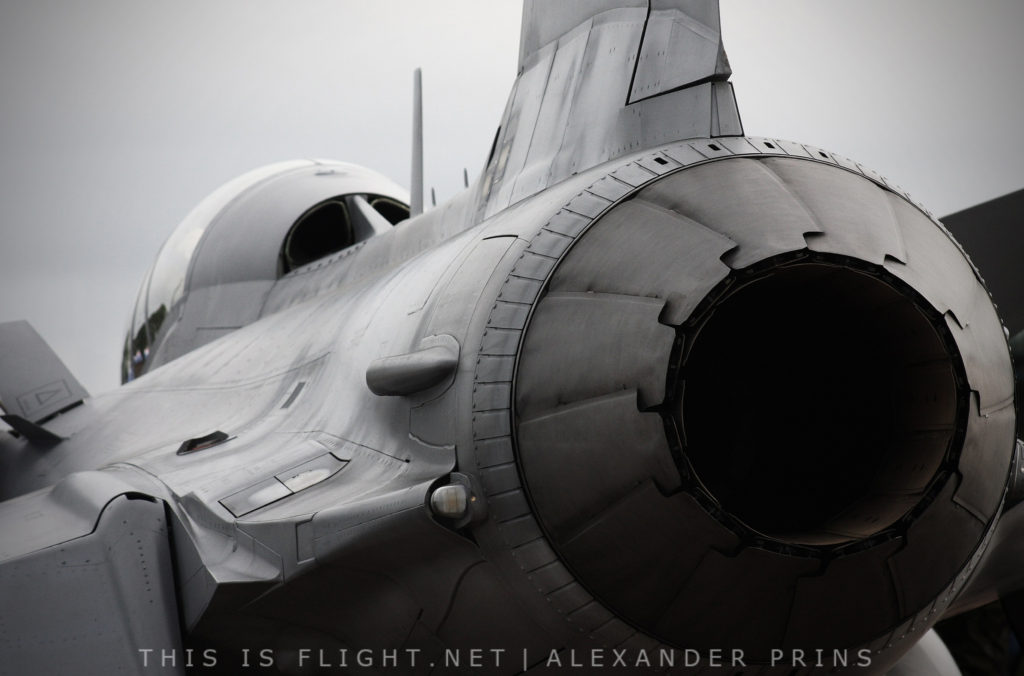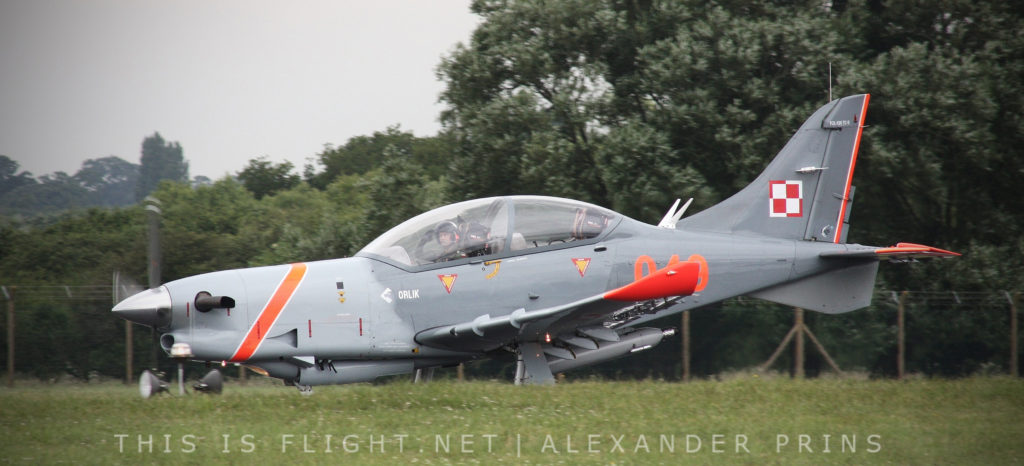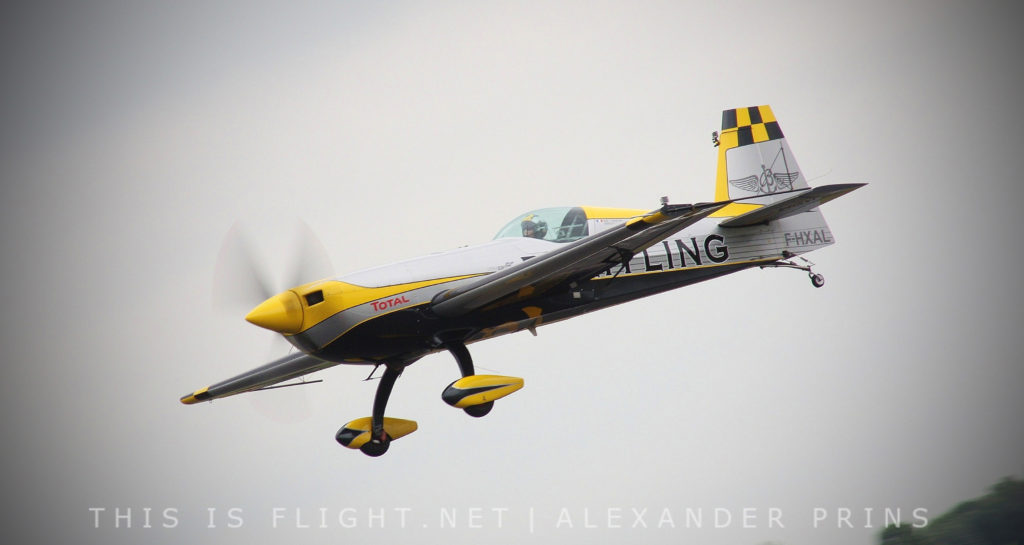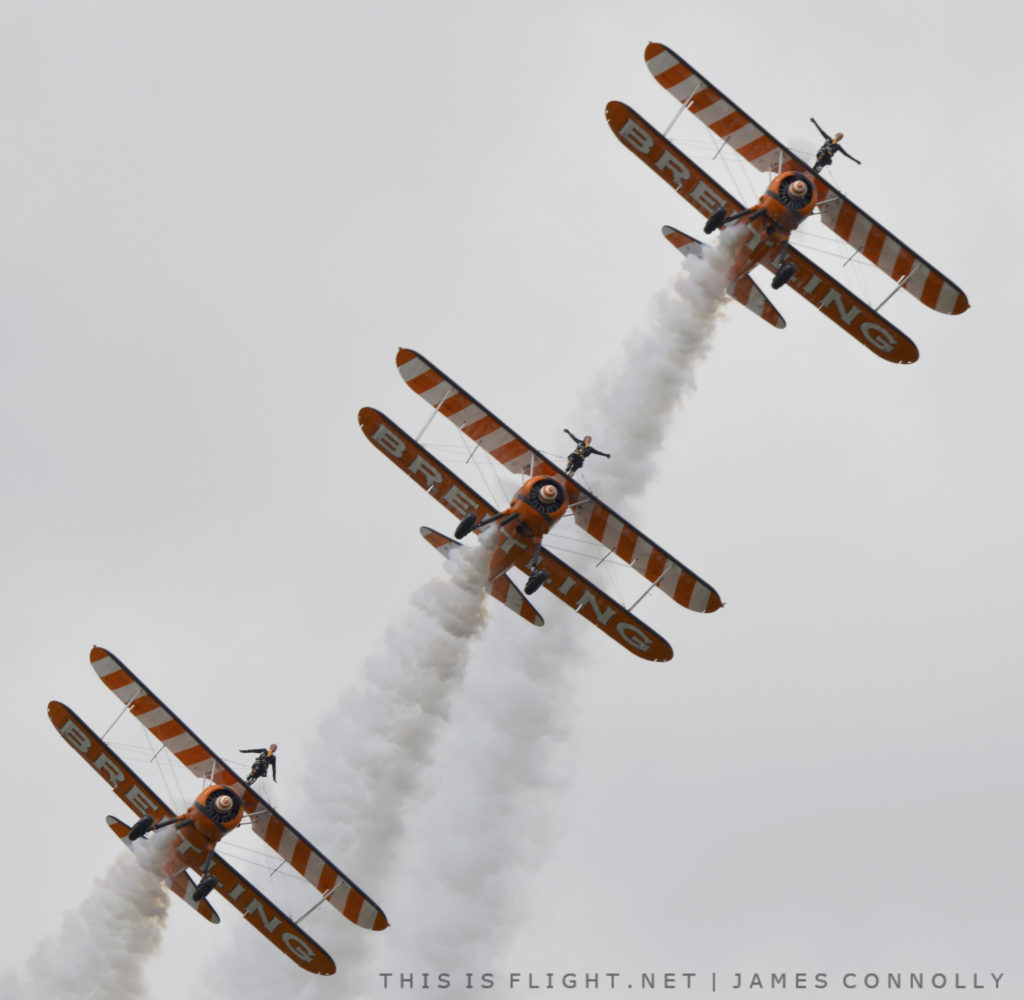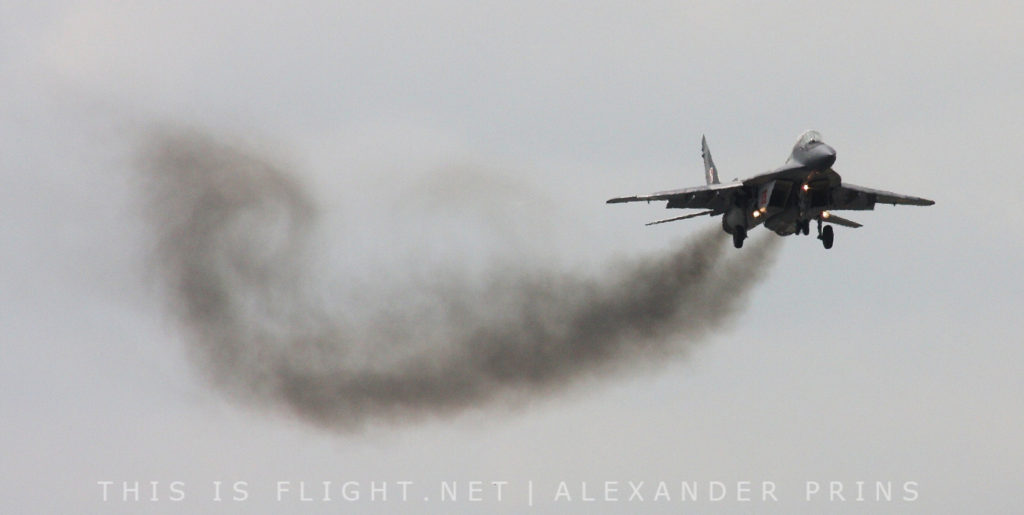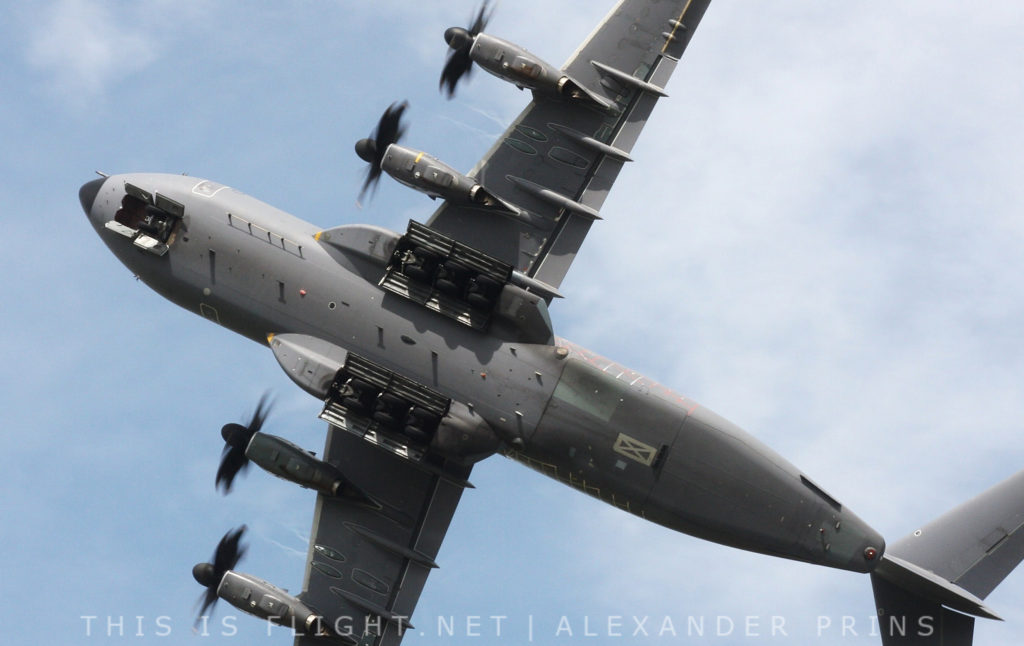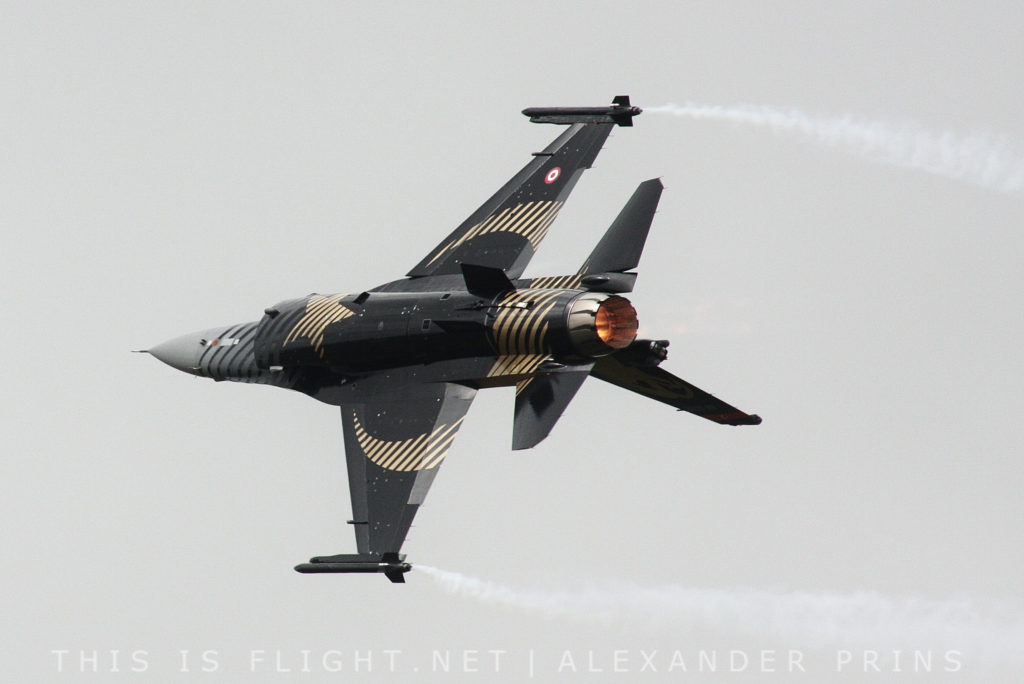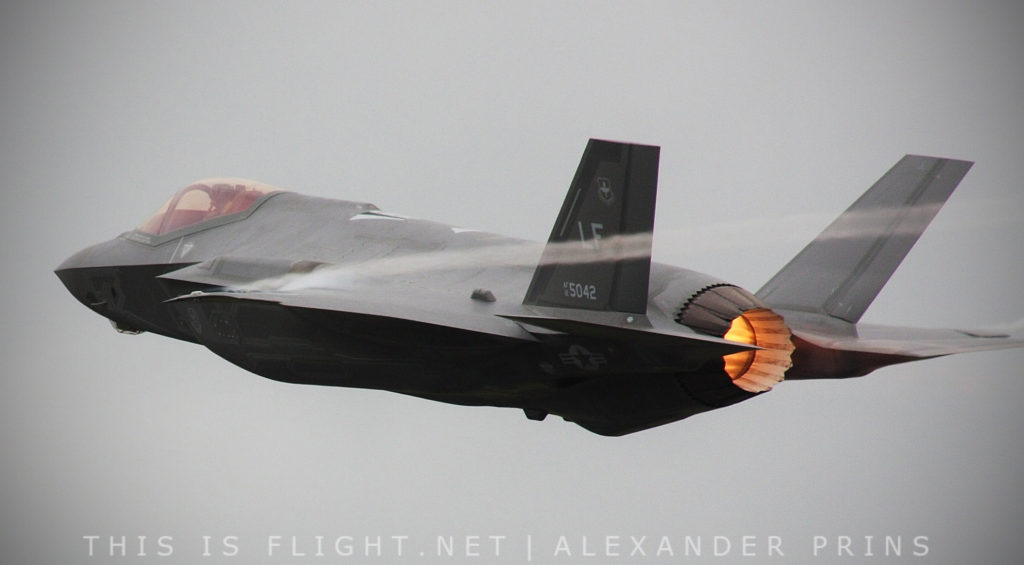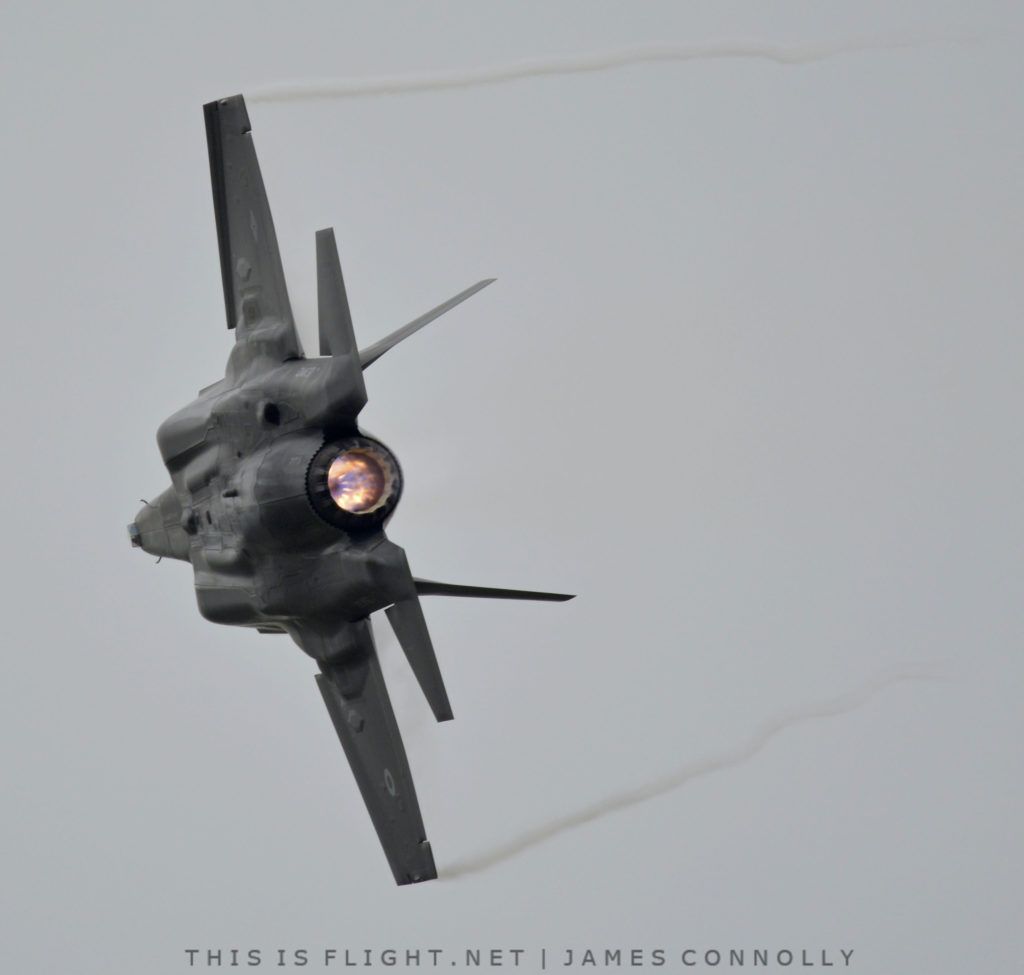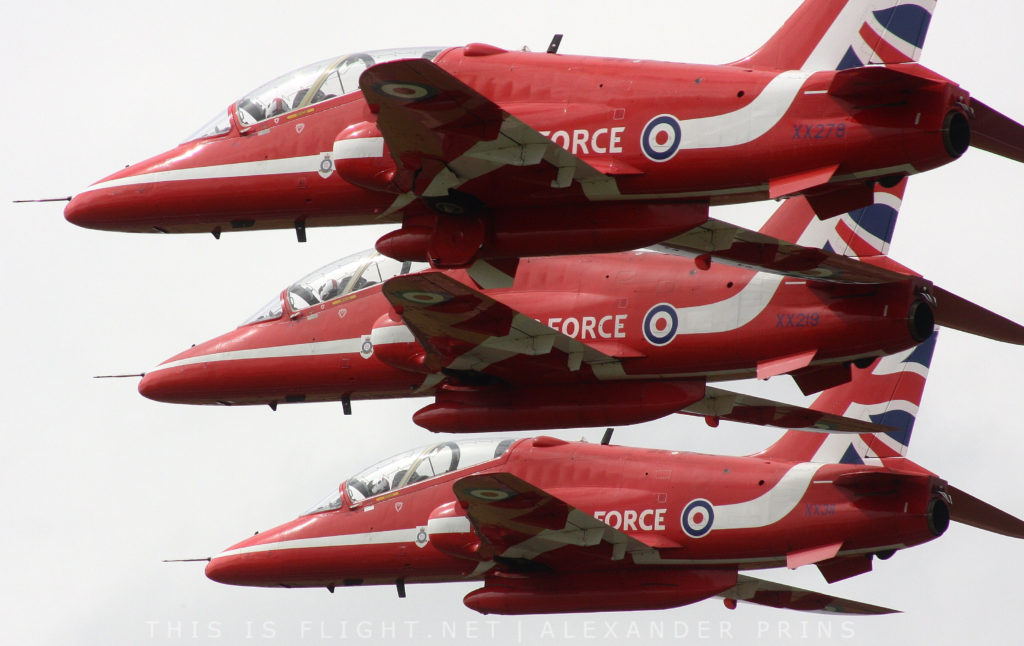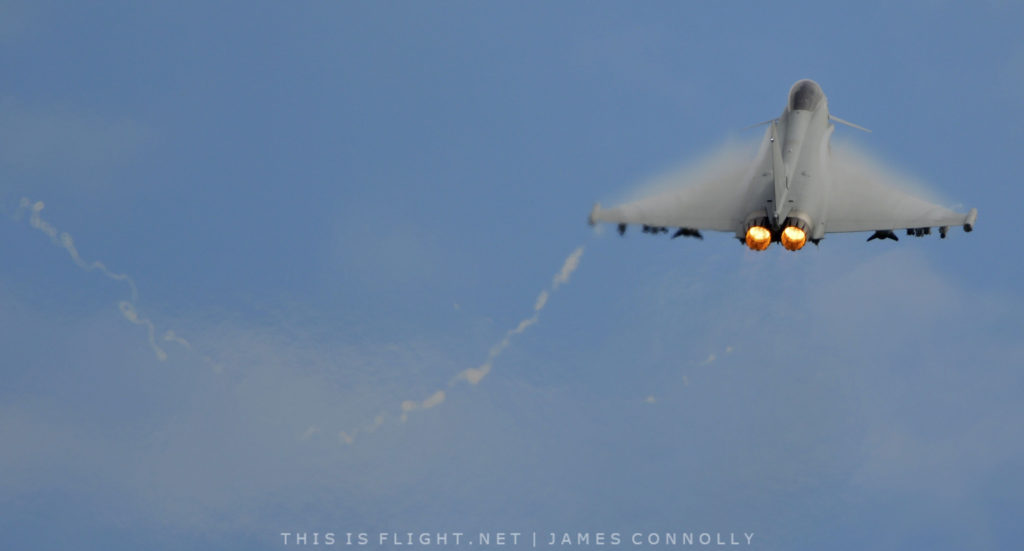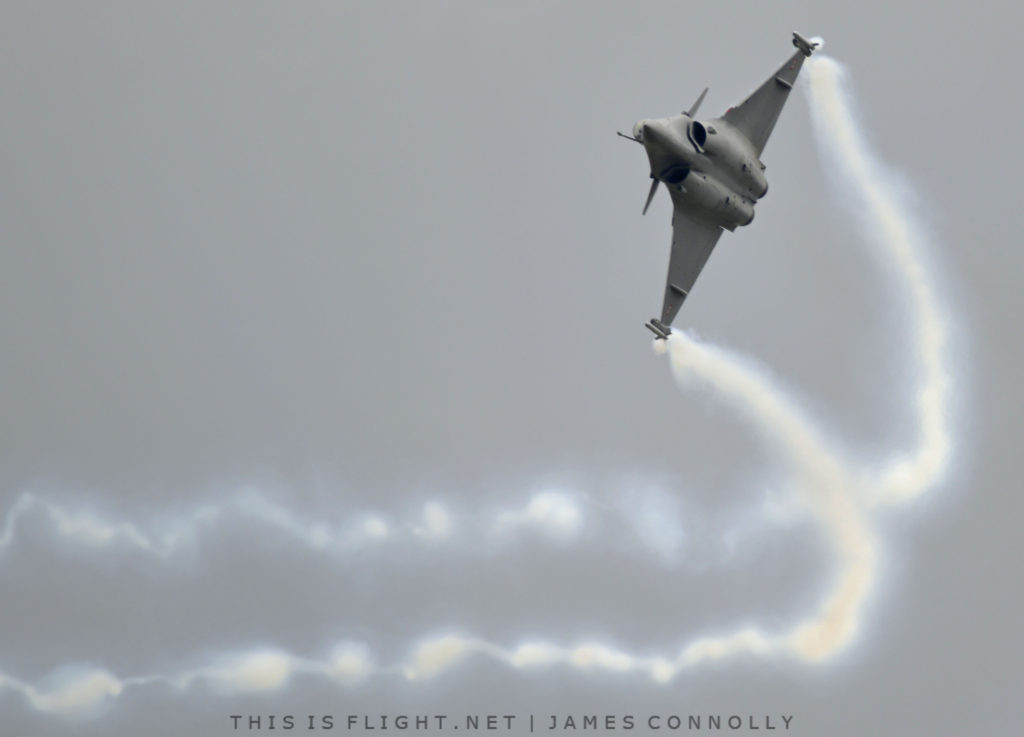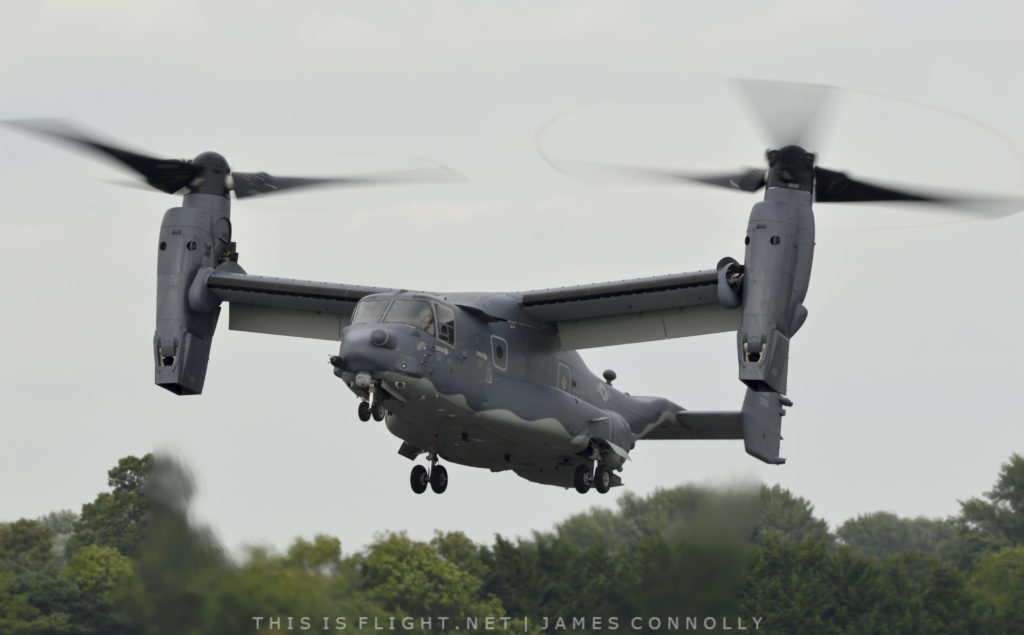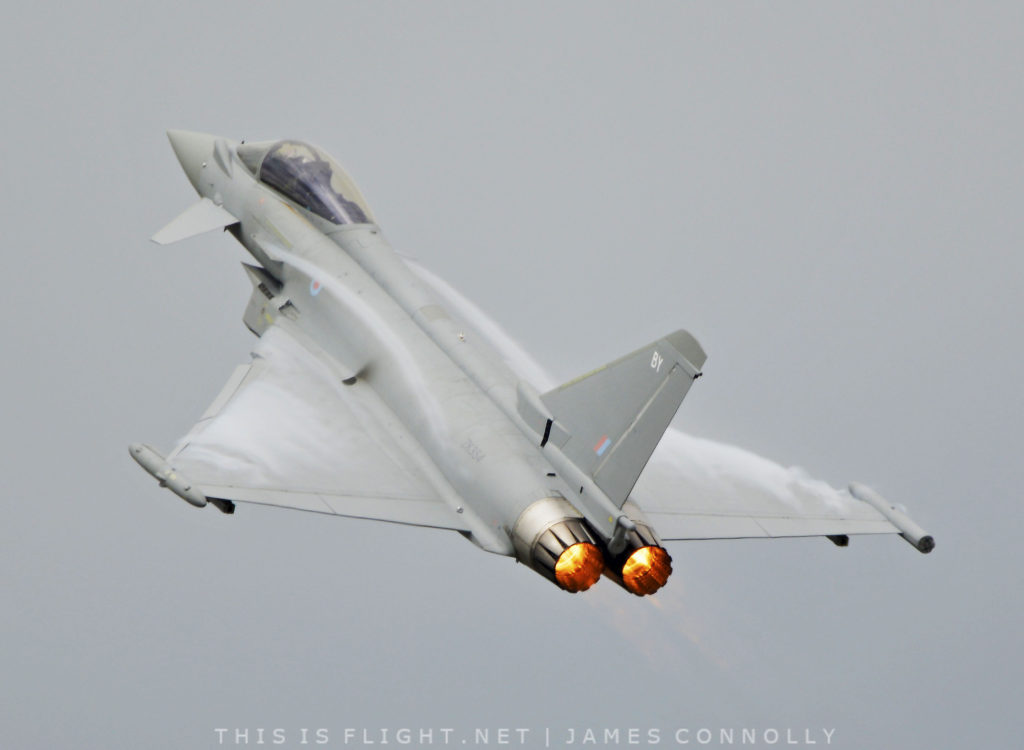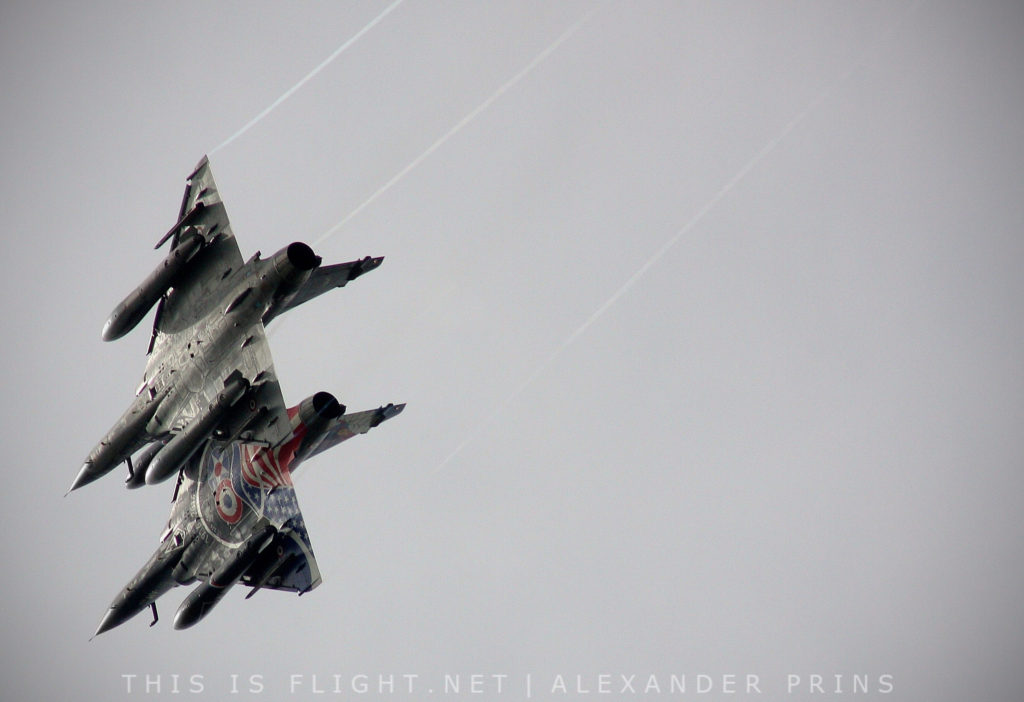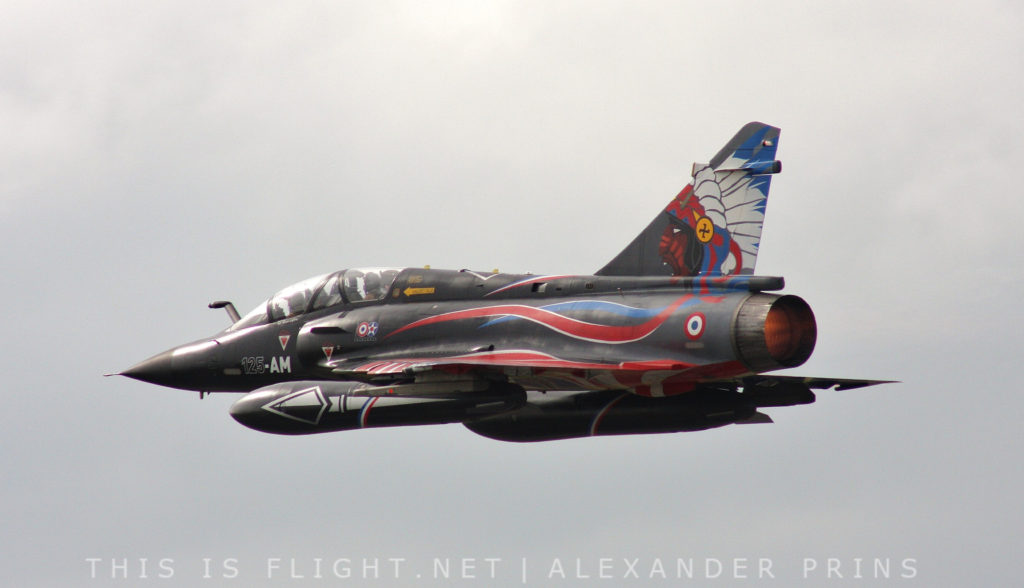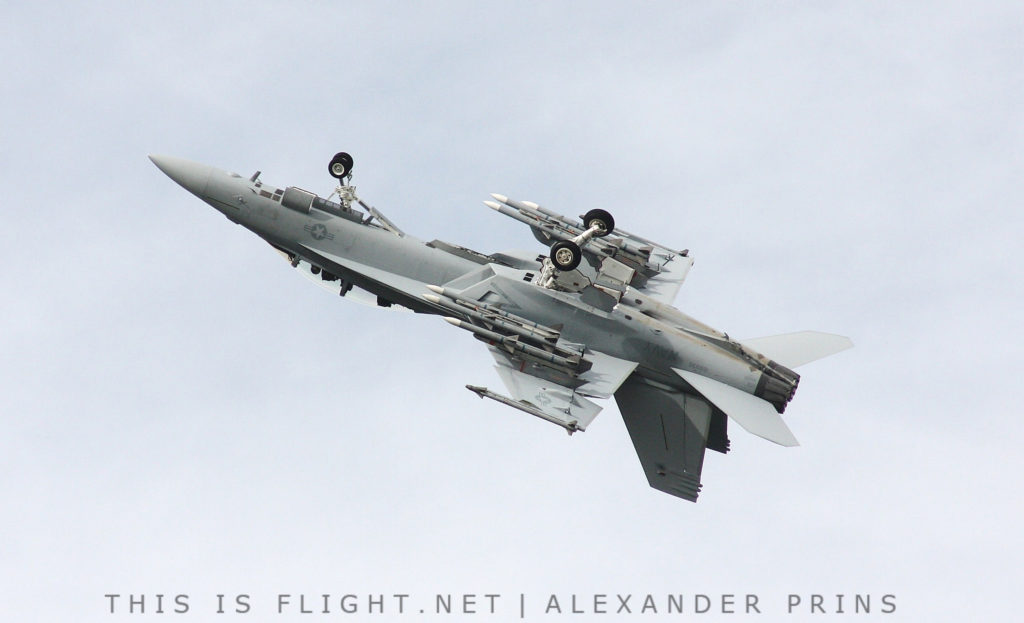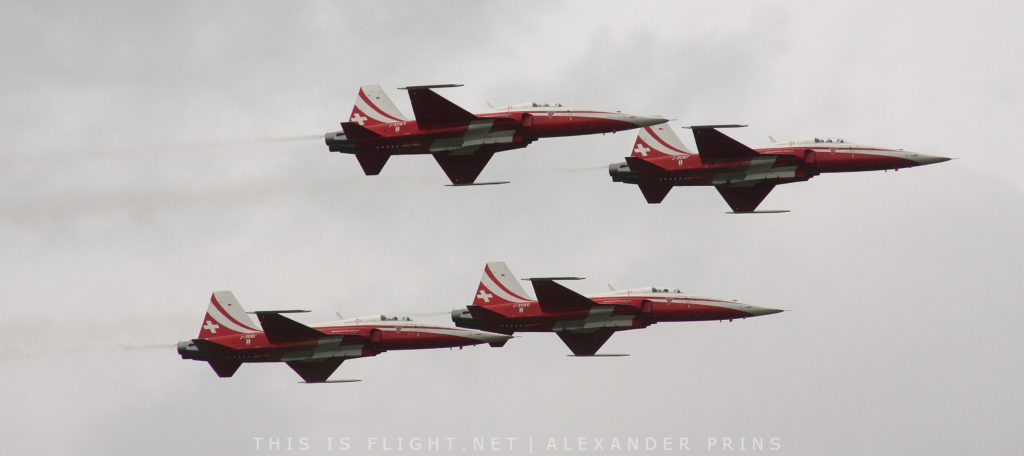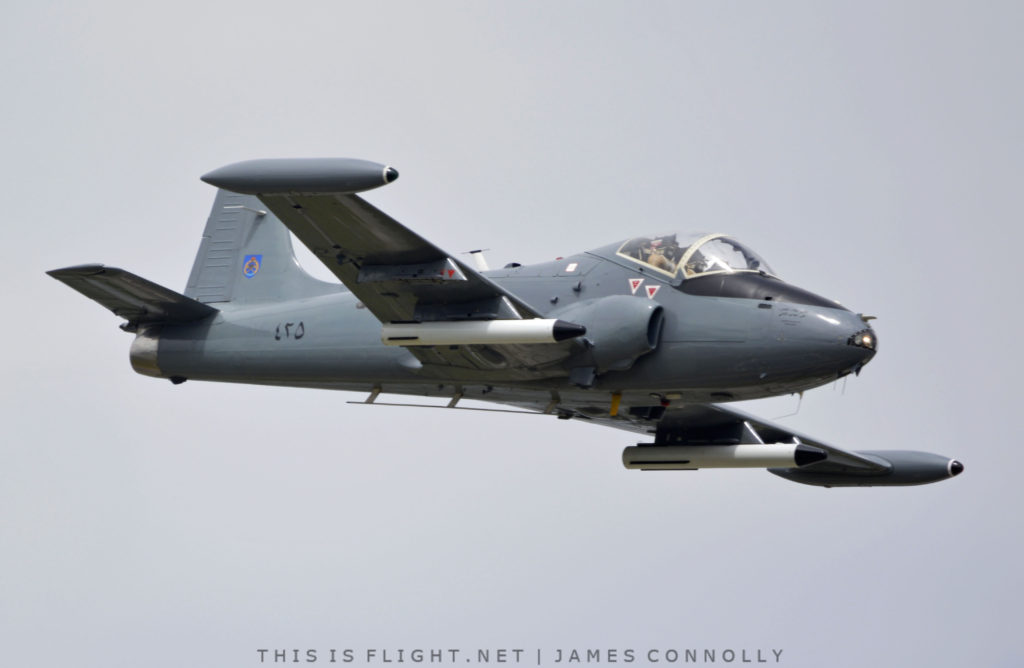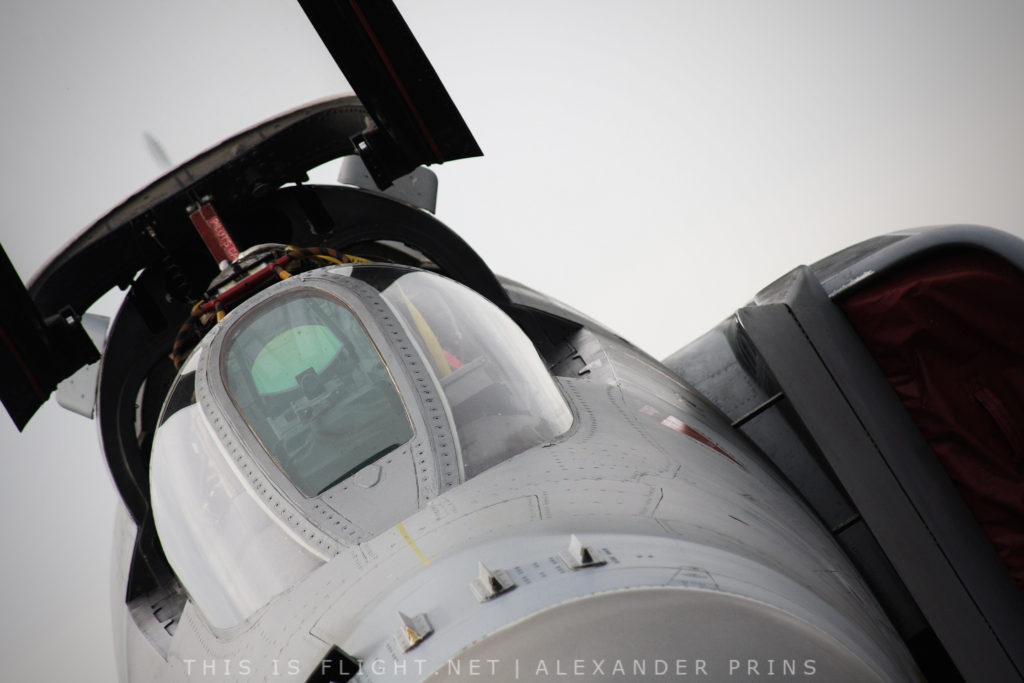The second weekend of July witnessed the culmination of a year’s worth of anticipation in 3 incredible days of airshow action. Every year thousands of “avgeeks” make the pilgrimage to RAF Fairford, for “the world’s largest military air show” – the Royal International Air Tattoo. This year’s show was, arguably, one of the best for a decade, if only the weather would play ball!
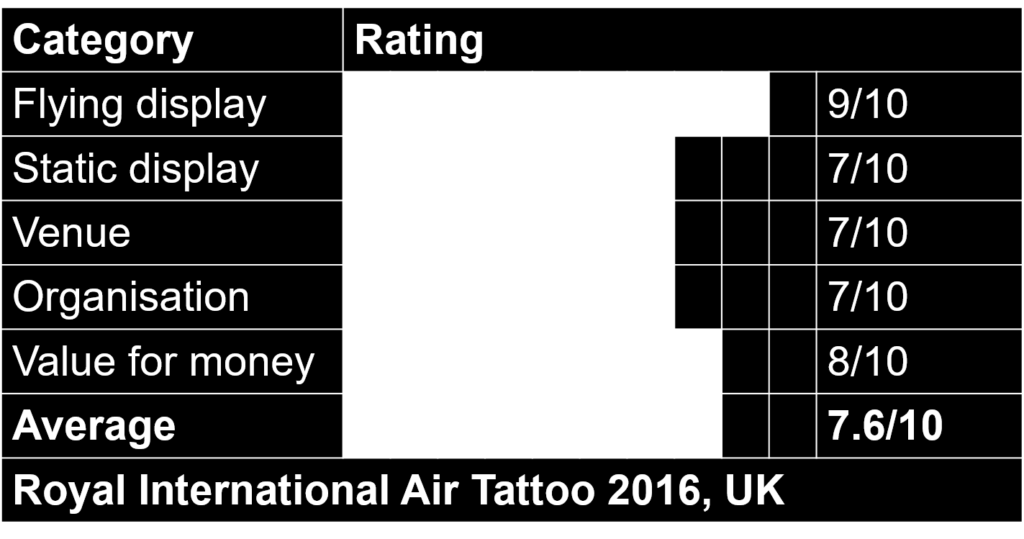
Ratings are an average compiled from all TIF reporters at the show, rounded to the nearest whole number.
I attended the Saturday show, and as such, most of this report will be based upon my experiences that day. I had spent the previous week, like many of you I expect, following Jim’s fantastic live updates during the arrivals days, so by the time I arrived in the Cotswolds I was more than ready for my bumper aviation fix!
Getting into the show was relatively simple for myself, joining the ‘Blue’ route in Kempsford at about 8am, having camped a few miles south of the airfield. Then, following a brief queue, I parked up and joined a pedestrian queue, itself unusual after many quick entries in the past. Fortunately this queue moved quickly, with security checking one person every five, and searching the odd bag. However I am given to understand that whilst it was simple for my own entry, many others who arrived earlier took over an hour to enter before security streamlined their checks and things became more efficient. As a result, whilst I don’t personally feel in a position to criticise those responsible for organising the security, I would suggest that the entry system itself must be in some way addressed. One such suggestion that I have seen several voice, is that the bags-searchers should begin by searching one in every five bags, rather than switching to this method once the ramifications of such an ineffective alternative method hit, as happened this year.
Once inside the airfield, it was a joy to be greeted with the sight of many incredible aircraft rare to this country, such as the KC-767J of the Japanese Air Self Defence Force, or the beautifully decorated C130E Hercules of the Pakistan Air Force, both part of a host of aircraft that will not be seen at any European airshow this year aside from the Air Tattoo. However, I chose to view the static in detail once the flying display was complete, instead choosing to use the hour prior to the commencement of the display to pick a spot on the crowdline and read the official programme.
One thing that certainly impacted many people’s experience of the show was that the number of tents and enclosures along the crowdline had increased, penning many people into small pockets of space, around the middle, or to the ends of the 2 mile crowdline; whilst it is important in the present airshow climate that shows are economically secure and able to continue, an increased corporate atmosphere is a sure way to alienate most of the paying public, and the RAFCTE must beware of the consequences.
It was somewhat disappointing for such an impressive line-up to be assembled, only for the British weather to attempt to scupper the show, as when the display began it was clear that the first few hours of the show would be blanketed by low cloud, restricting many of the opening acts to ‘flat’ displays. Indeed the following day, poor weather brought about the cancellation of several highlights including SoloTürk and the Patrouille Suisse.
The opening display of the day was a début for RIAT and the UK, in the form of an F-16C of the Polish Air Force. The Poles have long been a stoic supporter of the Air Tattoo, and so it was with some excitement that it was confirmed that their new F-16 demonstration team, formed just this year, was to be a part of the flying display. However in reality it must be said that the display was mediocre at best. Much like the Hellenic F-16 Demo ‘Zeus’, the display consisted of single passes in various configurations broken by turns away from the crowd; this is perhaps unsurprising given that the team was coached by the Greeks! Perhaps the low cloud confounded what would otherwise be a more entertaining routine, however on the day the distant rolls and turns did little to excite the crowd; regardless, I would hope that this new display continues to perform, and perhaps with time the quality will improve to the point that it will be able to rival its other European counterparts.
Following this was the Spanish Eurofighter Typhoon (or EF2000 as it is known in Spain) from the squadron ‘Ala 14’. Having last displayed at RIAT in 2007, it was a welcome return for the team, and it was immediately clear that this display would be much more intense than the Polish F-16. Whilst unfortunately also restricted to a flat display, the Spanish routine still packed a punch, with several minimum-radius turns leaving the Typhoon shrouded in a cloud of its own making!
Next to display was the Italian Frecce Tricolori; the world’s largest military aerobatic team, Frecce are in their final year with their 10 Aermacchi MB339PANs, which are to be replaced with the diminutive and underpowered Alenia Aermacchi M-345HET. Disappointingly, the Frecce’s flat display lacked all of the energy and dynamism of their full display, as virtually every signature manoeuvre they perform requires a high cloudbase, and once more the crowd were left wanting more. Just as upsetting was the announcement that this year would be the final year for the team’s current commentator, whose boundless enthusiasm and thick accent certainly endears him with the crowd.
Once the Frecce Tricolori had landed, the second of four F-16 displays lifted off with as much energy as the weather permitted. The 340 Squadron F-16C of the Hellenic Air Force, or ‘Zeus’ as it is better known, usually sports an attractive paint scheme, however for one reason or another a grey standard aircraft was used on the day that I attended. Sadly, the paint scheme is the best part of Zeus’ display, and the resulting display was lacklustre, as the US-style display of disjointed passes seemed to be performed much further from the crowd than any of the preceding displays.
Flying in from the hold once Zeus had landed was the RAF Chinook. A firm favourite, the Chinook was displayed with a grace belied by its size, with the aircraft performing vertical manoeuvres seemingly unhindered by the low cloud.
The following display was a return to the fast jet world, with the BAE Systems Typhoon being flown by Experimental Test Pilot Nat Makepeace, who won the Steedman Display Sword for the “Best Flying Demonstration by a UK Participant”. Personally, I felt the display was perhaps a little distant, and aside from the final few passes I felt the routine was surpassed by the earlier Spanish equivalent. What distinguished this display from the other three Typhoon displays of the day was its full payload of weaponry: 4 Meteor BVR missiles, 2 Brimstones, 2 ASRAAM missiles and 2 Paveway IV laser guided precision weapons.
Once Nat had vacated the runway, Commandant Tom ‘Gizmo’ De Moortel lifted off in the Belgian Air Component F-16AM; returning in its spectacular ‘Blizzard’ paint-scheme, this display was much improved over the Greek and Polish equivalents. The Belgian F-16 certainly rivals SoloTürk for the best F-16 solo display in Europe, and Saturday’s display was no different, despite the less than clement weather; the routine seemed much closer to the crowd than the day’s previous fighter jet displays.
Following this was a return to the rotary element, with the RNLAF once more displaying their fully aerobatic AH-64D Apache. The display, in the standard operational drab olive and lacking in flares due to Fairford’s restrictions, lacked impact, however the rare opportunity to see an Apache upside down certainly gives the routine a unique attraction! Following the theme of ‘lacking in impact’ was the next display: the Royal Jordanian Falcons. The fourship of Extra EA330Ls piloted by former Royal Jordanian Air Force pilots represented Jordan’s stoic support of the show, dating back to 1976. Whilst not everyone’s cup of tea, the Falcons’ support of the show is proven beyond doubt, and as long as the team and RIAT both exist, it must be accepted that they will continue to display at the Air Tattoo.
What followed was one of the billed highlights of the entire show, with the USAF’s Heritage Flight and F-22A Raptor solo display both making a welcome return to the show.’ Prior to the Heritage flight, the USAF F-22A ‘Raptor’ flew a solo display that, whilst impacted by the weather, showcased the ‘5th Generation’ stealth aircraft’s incredible manoeuvrability impressively. Major Dan ‘Rock’ Dickinson has been flying Raptors since 2008 and is in his first year as the solo pilot, and won the ‘As the Crow Flies’ trophy for his display, as voted for by members of FRIAT. Unfortunately on the Sunday, a technical fault not long into the display forced an immediate landing, leaving it up to Major Will ‘D-Rail’ Andreotta to fly an unplanned display in the USAF F-35A in replacement.
Immediately following Major Dickenson’s solo display in the F-22, the Heritage Flight commenced. This year’s flight was intended to consist of a USAF F-35A, F-22 Raptor, and P-51D Mustang ‘Miss Helen’, however unfortunately the Mustang was unable to join the flight on the day of my attendance. Oddly, the first pass by the duo was extremely distant as the two aircraft moved into formation in front of the crowd, as opposed to formating behind the airfield as it looked as though they were initially attempting to do. The following two passes were still rather distant and disappointingly lacking in topsides for those photographers amongst the crowd.
Once the two 5th generation aircraft had recovered to Fairford’s runway, a new act for the Air Tattoo took the skies. The Krila Oluje of the Croatian Air Force made their UK debut at RIAT this year, making Croatia the 56th nation to take part in the Air Tattoo since the show was established in 1971. The team was formed in 2004, and in 2005 was officially named in recognition of the 10th anniversary of a crucial battle in Croatia’s fight for independence, Operation Storm, hence their name ‘Wings of Storm’. On the Saturday they were unfortunately forced to fly their flat routine due to the cloudbase, however fortunately on the Sunday, Oluje were able to fly their attractive full display, including formation spins and stall turns. Further endearing them to the aviation enthusiast, the Croatians brought a Mil Mi-171 ‘Hip’ as a support aircraft, which they were kind enough to display on static. For their efforts, Krila Oluje were awarded the ‘King Hussein Memorial Sword’ for the ‘Best Overall Flying Demonstration’.
In an interview with This is Flight, Team Leader Lieutenant Colonel Damir Barìšić said of the team’s UK debut: “To be display pilot in the display team is always a big honour, and also a big responsibility to present your country and air force in the best way… ” and this they certainly did! The team were unquestionably a credit to their nation, and on their return to Coratia they wrote a touching letter to the RIAT Team: “If someone in Croatia didn’t know what and where is RIAT, now everybody knows. When you gave us King Hussein Sword award you started domino effect in Croatia. We are everywhere, TV news, newspapers, we got two MiG-21 QRA escort from national border to Zagreb airport… Thank you very much for the award, it will always have a very special place in our team history.” We hope that this positive experience fosters a warm relationship between RIAT and the Croatian Air Force, and that Krila Oluje return soon, possibly with some more of their ex-Soviet hardware in tow?
Following Krila Oluje was the one of the only acts not to operate from Fairford itself: the RAF Battle of Britain Memorial Flight. This year the flight has been hit by a plague of unserviceability, with both Dakota Kwicherbichen and Lancaster PA474 ‘Thumper’, the latter fortunately having returned to flight as recently as last week. As a consequence, the Flight was reduced to a pairs routine of fighters, with Hurricane Mk.IIc and Spitfire P7350, the oldest Spitfire still flying, and the only airworthy Spitfire to have actually fought in the Battle of Britain. Against the dark grey skies, and without their larger stablemate, the two fighters were rather second-rate, with their solo passes of repeated undersides lacking inspiration. Thumper’s return to the display circuit cannot come soon enough, as it is clear that there is a large gap left in her absence.
After the BBMF had vacated the airspace, we returned to the fast jet world with one of the oft-overlooked fast jet displays of Europe – the Swedish Air Force JAS 39C Gripen. Captain Peter Fällén flew a display that deservedly won the ‘Sir Douglas Bader Trophy’ for the “Best Individual Flying Demonstration”. This compact and low-cost fighter jet put on an intense display despite the low cloud.
Next was the second of three Polish displays of the day: Team Orlik, named after their steed the PZL_130TC-II Turbo Orlik turboprop trainer. The ‘Orlik’ (Eagle) display team first flew at the Air Tattoo in 1998, and most recently in 2014, so made a welcome return this year. Following this, and continuing with the light aircraft side of the display, was Aude Lemordant in her Breitling Extra 330SC. Such displays are better suited to smaller airshows, where the displays have impact; as it was, despite a clearly competent display, very few people were held engaged throughout, as the diminutive aircraft was lost on Fairford’s 2-mile runway. Such a display was completely unnecessary, considering the strength of the line-up prior to its confirmation two weeks before the show.
The Breitling Wingwalkers, who flew immediately after Aude Lemordant, confused many with their brief display which culminated with a sudden landing; it was surprising that no effort was made for the two displays, both of Breitling sponsorship, to fly together in formation, which would at least have added a unique twist to an otherwise uninteresting segment of the day’s flying.
Fortunately, the following display recaptured the attention of those that hadn’t wandered off during the preceding tedious interlude, with the Polish Mikoyan MiG-29A, from 1 Eskadra Lotnictwa Taktycznego (1st Tactical Squadron) flown by Kapitan Adrian Rojek. This routine proved to be one of the most astounding of the day, with Rojek performing tail slides, missed-approaches and minimum radius turns, with plenty of afterburner thrown. In a demonstration of the variety that is accrued at RIAT, following this beast of former-Soviet heritage we were treated to a display by the only ‘heavy’ of the day, in the form of the Airbus Military A400M – one of the newest types on display.
The A400M ‘Atlas’ display was, in a touching move by commentator Ben Dunnell, dedicated in memory of Edward ‘Ed’ Strongman, the former Chief Test Pilot for Airbus Defence and Space, who passed away in March 2016. Ed flew many engaging displays in the Atlas prior to his untimely passing, so it was appropriate that this year’s display was just as exhilarating. Despite having seen it several times already, I am still taken aback by the manoeuvrability of the aircraft which is best demonstrated by its incredible take-off, pitching up after a short take-off run into a steep turn, almost reaching the airframe’s maximum angle of bank of 120°.
By the time the fourth and final F-16 display of the day lifted off, the weather had cleared up to an extent, so Captain Erhan Günar of the Turkish Air Force was able to fly virtually a full display in ‘SoloTürk’, much to the delight of the crowd who were able to appreciate the quality of the display they were witnessing. Unfortunately this year SoloTürk was not the recipient of any awards, however one would hope that “The Handsome Ones” will return in the near future, with the hope of once more winning an award of some sort.
After SoloTürk we were treated to one of RIAT’s biggest annual attractions, its unique Red Arrows flypast. This year was the much anticipated debut of the F-35B in formation with the RAFAT Red Arrows. The Lightening II was to be flanked on either side by the RAF’s current primary mount, the Eurofighter Typhoon. Disappointingly on the day of my attendance, the RAF was only able to muster a single Typhoon for the flypast, surmising possibly, the substandard significance with which the Air Force views airshows. Once all the aircraft that would partake in the flypast had taken-off, they formated away from the airfield whilst the German Army Bo.105 displayed.
The award-winning display from last year returned, however the minute helicopter’s routine was once more lost along Fairford’s two-mile crowdline. Despite its impressive aerobatics, the crowd that had assembled to watch the Reds paid very little attention to the display, instead scanning the horizon for a glimpse of the assembling flypast. Once the Messerschmitt-Bölkow-Blohm Bo.105 had landed to only scattered applause, the most-anticipated occasion of the afternoon took place. The nine red Hawks of the Red Arrows led a single USMC F-35B, with a Typhoon in line-astern formation behind it. Disappointingly, such an impressive formation made only a single pass, before breaking up for the F35’s display; last year’s Vulcan flypast consisted of two passes, with varying smoke configurations, so the single move was anticlimactic to say the least.
The following display from the F-35B gave a glimpse of what we might expect from the RAF’s next generation fighter aircraft. I’ve read accounts stating that the display we witnessed at RIAT was more subdued than those seen in the States, however given the aircraft’s unproven record, I’m willing to give the aircraft the benefit of the doubt. Following several passes in various configurations, Colonal Richard Rusnok switched the aircraft from conventional flight arrangement into STOVL (Short Take-Off Vertical Landing) mode. What followed next impressed many of those assembled, especially those that were never fortunate enough to witness a Harrier display, as the fighter proceeded to hover at crowd centre, remaining stock-still despite the crosswind. With the Rolls Royce F135 Engine generating 41,900 pounds of thrust, it is a small wonder that the ‘datum marker’ cones denoting crowd centre were completely demolished by the downdraught!
Subsequently the Red Arrows returned from the hold with their usual overhead pass, this year in ‘Wall’ formation. Their display opened as a ‘full’ show, however a wandering cluster of clouds then restricted the latter half of the Reds’ routine to a largely ‘rolling’ display, which they performed with the usual aplomb. So far this season the Reds have been largely constrained to flat displays, so it was magnificent to once more see some of their higher loops and rolls.
Following the Red Arrows was the second Italian contribution of the day, in the shape of the Reparto Sperimentale Volo Tranche-3 F2000A Typhoon. This display last appeared at the Air Tattoo in 2014, where it put on an astounding display, so many were quite rightly expecting a repeat. Unfortunately I felt that whilst an improvement over the earlier display by BAE, this year’s RSV Typhoon display lacked the same polish and flair of previous, and even the comparable Spanish routine in the grey of the morning was a more powerful equivalent.
By contrast, the following display had everything that the Typhoon routine lacked, style and élan aplenty. This was yet another award-winning display by the French Armée de l’Air Dassault Rafale C, a display that can easily be summarised with a single word: sublime! This year’s display was flown for the first time by Capitaine ‘Marty’ Martinez, a clearly competent display pilot, who received the ‘Paul Bowen Trophy’ for the “Best Solo Jet Demonstration”.
Returning for a second year running was the Bell-Boeing V-22 Osprey, of the 7th Special Operations Squadron of the 352nd Special Operations Wing, based at RAF Mildenhall. This tiltrotor aircraft’s routine is somewhat brief for a role demo, however very welcome as RIAT is the only place outside of the US where we are able to see a demonstration of the sort.
The final RAF display, and fourth Typhoon demonstration of the day, saw Flight Lieutenant Mark ‘Schlongy’ Long, fly the Typhoon FGR4 of 29(R) Squadron. This year’s routine demonstrates more than any of its predecessors, the power of the Typhoon, and I would rank it alongside the Spanish equivalent for the best display of the Typhoon type on the day. The next and final British display was the Royal Navy ‘Black Cats’ from 825 Naval Air Squadron, equipped with two Agusta-Westland Wildcat HMA2s. As impressive as their display is, it felt as though the majority of their display was for the benefit of those on crowd centre, and where I was positioned to the west, much of their display was distant and lacked impact.
Next to display was my personal highlight, the final farewell for the French role demonstration team Ramex Delta. Ramex fly two Dassault Mirage 2000Ns, one of which was painted up in a ‘La Fayette’ scheme to celebrate the centenary of the ‘Lafayette Escadrille’, a squadron in which 38 American airmen flew with during World War One. Fittingly, the scheme won Ramex Delta one of their two awards, in the form of the ‘Concours D’Elegance’ trophy for the best paint scheme at the Air Tattoo.
The two Mirages put on a thunderous display of power and energy as they demonstrated the capability of the Strategic Air Forces. The routine demonstrates most of the manoeuvres that the aircraft and pilots may be required to fly on operations; in the late evening light the two nuclear-capable fighter-bombers looked simply magnificent, and deservedly also won the ‘Lockheed Martin Cannestra Trophy’ for the “Best Flying Demonstration by an Overseas Participant”. RIAT 2016 marked the final displays by Ramex Delta, who disband as a team at the end of this season, with no further display commitments. They will be sorely missed by the airshow community, however their incredible displays and merited awards made their appearance at the Air Tattoo an apt swansong for the team.
The final solo display of the day was in the form of the Boeing demonstration of the F/A-18 Super Hornet. Using a US Navy aircraft, the display was its Farnborough routine and as such implemented a high base height, however despite this the copious tail slides definitely demonstrated the aircraft’s capabilities.
The final display of the day was the Patrouille Suisse; quite what lies ahead for the team is unclear, as it was reported that this year was to be the team’s final year. However, in an interview for the This is Flight RIAT Video Report, the commander of the Patrouille Suisse Lieutenant Colonel Nils Hämmerli said: “We hope that we can fly for another 5-10 years with the F5… if the Air Force uses the F5 as a service aircraft… we will also fly with the Tiger for the Patrouille Suisse.”
Following their incident at Leeuwarden earlier in the year, the team are a pilot short, however have continued as a 5-ship display team; unfortunately pilot illness reduced the team further, resulting in an improvised 4-ship routine being flown. More misfortune followed on the Sunday, as the weather forced the cancellation of their display slot, with a very flat display being performed, as the aircraft taxied down the runway in consolation. As the final aircraft touched down, the Saturday flying display was concluded, ending what had been an incredible 8 hours of action!
I took the time following the flying display to peruse the static as the crowds thinned, enjoying rare spectacles such as the Omani CASA C295, positioned alongside Mark Petrie’s Oman-marked BAC Strikemaster, as well as the Polish Navy AN-28B1R ‘Bryza’ marked up in a special scheme commemorating the Battle of the Atlantic in World War Two. It must be said, this year’s static line-up was possibly the thinnest it may ever have been, however what it lacked in quantity it certainly made up for in quality; examples of this would be the Royal New Zealand Air Force Boeing 757-22QC, or the two F-4Es of the Hellenic Air Force of 117 Combat Wing based at Andravida – a rare chance to see an operational Phantom in the flesh. There are rumours that next year the contractors Hawker Hunter Aviation intend to bring one of their ex-Luftwaffe Phantoms for the static display, as they did with their Hunter this year.
This year’ RIAT was, I would argue, the best for a decade, and given the current climate of shrinking budgets and increased operational commitments, the quality aircraft on display was staggering. I would hope that the Douglas Bader House team are able to continue their upward trend, as we prepare to celebrate the 70th anniversary of the US Air Force – the possibilities are almost endless!
Alex Prins is a UK based photographer and aviation enthusiast, and also the deputy-editor of This is Flight; he would like to dedicate this report in the memory of Henk Prins, the source of his love of aviation. Photos also come from Jim Lucas and James Connolly, both UK-based photographers.
